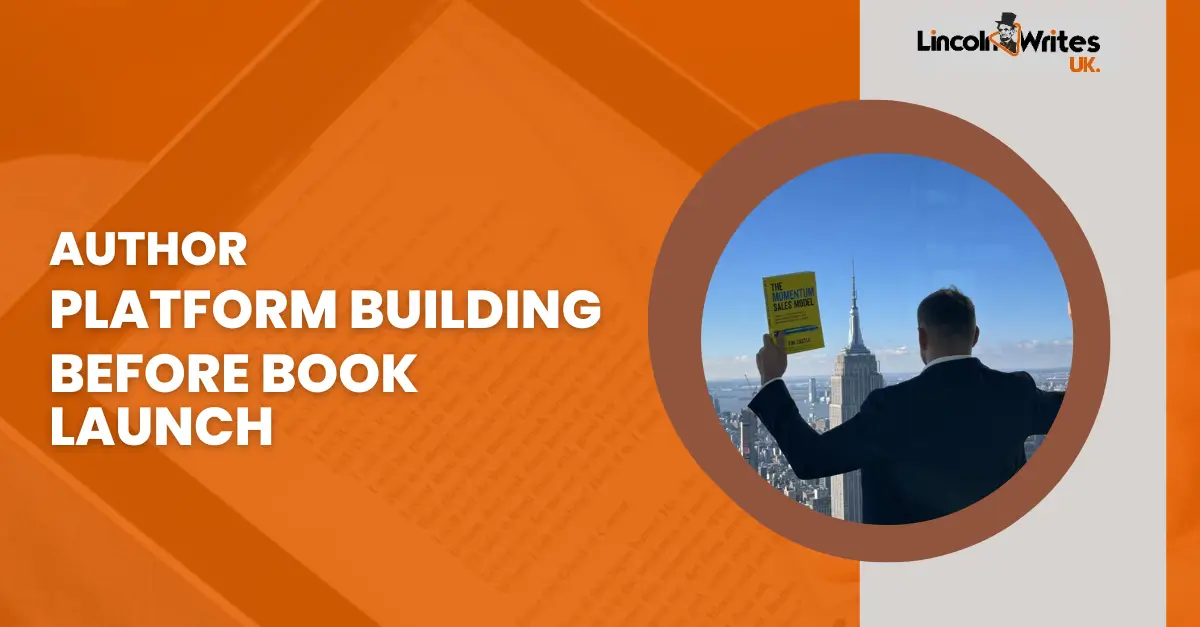You’ve written the book. Maybe you’re polishing the last chapter, or maybe you’re deep into revisions and trying to choose between line editing and copyediting. But here’s the thing most first-time authors miss: long before your book hits digital shelves or goes off to print, you should be building your audience.
And that starts with author platform building.
It’s not about shouting into the void or chasing followers. It’s about creating genuine visibility. The kind that helps people discover you, connect with your voice, and eventually buy your book. Whether you’re launching a memoir, business guide, fantasy epic, or a children’s picture book, having a strong platform gives your book the runway it needs to take off.
Let’s talk about how to build that platform step by step, and how book marketing services can give you a major head start.
Why Your Author Platform Matters
Think of your author platform as the ecosystem around your book. It includes your online presence, your audience, your mailing list, any speaking engagements, and even how you collaborate with professionals, like editors or if you collaborate with a children’s book illustrator.
Your platform proves to agents, publishers, and readers that you’re not just writing a book, you’re building a brand. And no, you don’t need to be a celebrity or TikTok influencer to make it work.
Whether you’re self-publishing or going traditional, most experts agree: building your platform early is essential.
Step 1: Define Your Author Brand
Before anything else, you need to get clear on who you are as a writer. What themes do you write about? Who’s your target audience? What tone do you use, humorous, reflective, or direct?
This is also a great time to start thinking about your book’s future categories, whether it’s memoir vs biography, self-help vs business, or middle-grade fiction.
Solidify your brand before your website or social profiles go live. This will guide everything, from your tone of voice to the design of your author website and how you plan your content strategy for brand visibility.
Step 2: Build a Professional Website
Your author website is your digital home base. At the very least, it should include:
- A short, compelling author bio
- A page about your upcoming book(s)
- A blog or news section for updates
- A newsletter sign-up
- Contact info and links to social profiles
And yes, it needs to be clean, fast, and easy to navigate. Your homepage is a perfect place to apply persuasive website copy tips, especially if you’re preparing for a launch or email list growth.
Don’t wait until after your book’s out to set this up. Do it now, so that all your marketing efforts can direct readers somewhere meaningful.
Step 3: Start Growing an Email List
Social media is great, but an email list is gold.
Unlike social platforms that change algorithms overnight, your mailing list is fully under your control. Start small: offer updates, exclusive sneak peeks, or maybe a free short story. The goal? Start building trust.
This is where book marketing services can really help. Services like those offered by Lincoln Writes UK develop tailored lead-generation campaigns that help you attract the right readers, people who are likely to care about your genre, themes, or tone.
Step 4: Create Consistent Content
Blogs, videos, newsletters, whatever your content vehicle, show up regularly. But don’t just post for the sake of posting. Share insights from your writing journey, behind-the-scenes updates, or even research discoveries (especially useful if you’re working on nonfiction or historical fiction).
Need ideas? Start with evergreen blog topics that align with your book’s theme or your author persona. Then, layer in fresh content, progress updates, launch dates, cover reveals, and more.
And don’t be afraid of analytics. Understanding what content performs well leads to smarter data-driven article writing, which helps you serve your audience better.
Step 5: Set Up Pre-Launch Promotion
Months before your release, your platform should already be active and buzzing.
- Tease your cover reveal
- Share snippets from your draft
- Publish a blog post that ties into your book’s theme
- Run a giveaway or start a reader poll
All of this contributes to that crucial pre-launch buzz. If you’re working with ebook formatting tools, share a sneak peek of the layout. If you’re using book marketing services, this is when their expertise in targeted campaigns and launch timelines really shines.
Step 6: Link Up with Industry Professionals
Agents, editors, and illustrators they’re all part of your extended team. You don’t need to land them all at once, but you should be researching and engaging early.
This might include:
- Querying agents (while avoiding querying literary agents’ mistakes)
- Exploring the process behind a ghostwriting contract if you’re outsourcing
- Getting feedback on your autobiography structure or plot arc
These steps don’t just improve your work. They grow your industry network, which matters when it’s time to launch.
Step 7: Think Long-Term
Yes, we’re prepping for your book’s launch, but platform-building never really stops.
If you’re building a career as a writer, whether it’s through self-published books, traditionally published deals, or even being hired as a ghostwriter (we’ll help you choose a ghostwriter UK if needed), you need a consistent and evolving author presence.
You’ll want to stay up to date on marketing trends, maintain relationships, and track things like sales, email open rates, and book royalties in the UK once your book is out in the world.
Final Thoughts
Author platform building isn’t about vanity metrics or showing off. It’s about preparing the stage for your book and your career as a writer. From setting up your website to using book marketing services that help target and engage your ideal readers, every step you take now will make your launch smoother, stronger, and more successful.
And as you continue your journey, from wondering whether to use ebook formatting tools, to strategizing around your business plan components, startup, or even thinking about how to collaborate with a children’s book illustrator, remember this: your platform is the bridge between your writing and the world.
Build it well, and the right readers will come.


